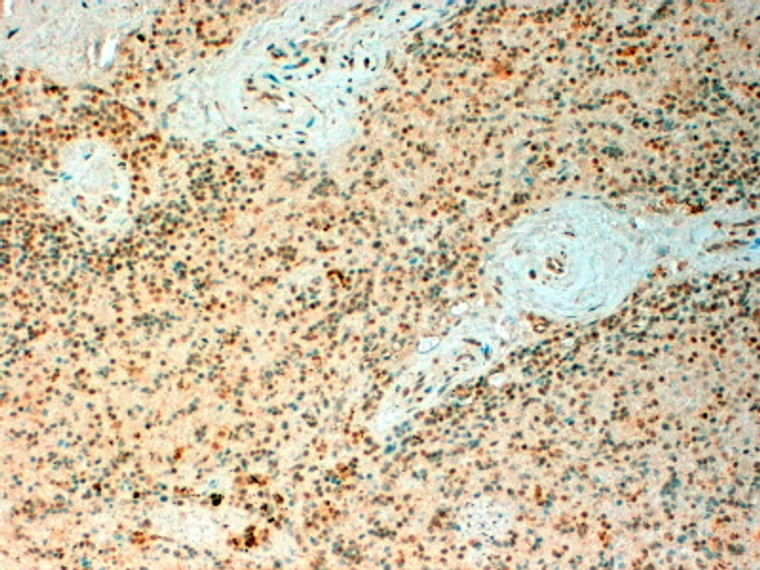| Host: |
Goat |
| Applications: |
Pep-ELISA/IHC/FC |
| Reactivity: |
Human/Mouse/Dog |
| Note: |
STRICTLY FOR FURTHER SCIENTIFIC RESEARCH USE ONLY (RUO). MUST NOT TO BE USED IN DIAGNOSTIC OR THERAPEUTIC APPLICATIONS. |
| Short Description: |
Goat polyclonal antibody anti-TET2 (Internal) is suitable for use in ELISA, Immunohistochemistry and Flow Cytometry research applications. |
| Clonality: |
Polyclonal |
| Conjugation: |
Unconjugated |
| Isotype: |
IgG |
| Formulation: |
0.5 mg/ml in Tris saline, 0.02% sodium azide, pH7.3 with 0.5% bovine serum albumin. NA |
| Purification: |
Purified from goat serum by ammonium sulphate precipitation followed by antigen affinity chromatography using the immunizing peptide. |
| Concentration: |
0.5 mg/mL |
| Dilution Range: |
IHC-2-6µg/mlELISA-antibody detection limit dilution 1:16000. |
| Storage Instruction: |
Store at-20°C on receipt and minimise freeze-thaw cycles. |
| Gene Symbol: |
TET2 |
| Gene ID: |
54790 |
| Uniprot ID: |
TET2_HUMAN |
| Immunogen Region: |
Internal |
| Accession Number: |
NP_001120680.1; NP_060098.3 |
| Specificity: |
This antibody is expected to recognize both reported isoforms (NP_001120680.1; NP_060098.3). |
| Immunogen Sequence: |
PHPQSNNDQQREGSF |
| Post Translational Modifications | May be glycosylated. It is unclear whether interaction with OGT leads to GlcNAcylation. According to a report, it is not GlcNAcylated by OGT. In contrast, another group reports GlcNAcylation by OGT in mouse ortholog. Monoubiquitinated at Lys-1299 by the DCX (DDB1-CUL4-X-box) E3 ubiquitin-protein ligase complex called CRL4(VprBP) or CUL4A-RBX1-DDB1-DCAF1/VPRBP complex.this modification promotes binding to DNA. |
| Function | Dioxygenase that catalyzes the conversion of the modified genomic base 5-methylcytosine (5mC) into 5-hydroxymethylcytosine (5hmC) and plays a key role in active DNA demethylation. Has a preference for 5-hydroxymethylcytosine in CpG motifs. Also mediates subsequent conversion of 5hmC into 5-formylcytosine (5fC), and conversion of 5fC to 5-carboxylcytosine (5caC). Conversion of 5mC into 5hmC, 5fC and 5caC probably constitutes the first step in cytosine demethylation. Methylation at the C5 position of cytosine bases is an epigenetic modification of the mammalian genome which plays an important role in transcriptional regulation. In addition to its role in DNA demethylation, also involved in the recruitment of the O-GlcNAc transferase OGT to CpG-rich transcription start sites of active genes, thereby promoting histone H2B GlcNAcylation by OGT. |
| Protein Name | Methylcytosine Dioxygenase Tet2 |
| Database Links | Reactome: R-HSA-5221030Reactome: R-HSA-9827857 |
| Cellular Localisation | NucleusChromosomeLocalization To Chromatin Depends Upon Monoubiquitination At Lys-1299 |
| Alternative Antibody Names | Anti-Methylcytosine Dioxygenase Tet2 antibodyAnti-TET2 antibodyAnti-KIAA1546 antibodyAnti-Nbla00191 antibody |
Information sourced from Uniprot.org
12 months for antibodies. 6 months for ELISA Kits. Please see website T&Cs for further guidance








